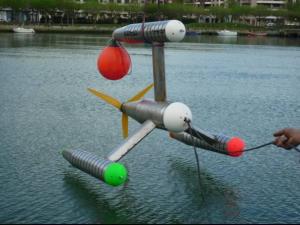
Engineers at Lancaster University are working on powering future ‘giant leaps’ for mankind.
They are major partners of a consortium working on a new £1 million project to maximise ‘energy harvesting’ on a space craft of the future.
The BAE Systems initiative seeks to find energy-saving and maximising solutions to enable eco-friendly aircraft to stay in space for long periods of time without the need to return to earth to re-fuel or to avoid carrying vast amounts of heavy fuel on long-stay journeys.
Principal Investigator Professor Jianqiao ye, of Lancaster University’s Engineering Department, said: “Our role is to look at saving the power used to support the monitoring system. There needs to be frequent communication between the aircraft and earth and power is needed to send huge constant quantities of data as well as receiving instructions from a communications centre.”
The Lancaster research, which has just begun, will look at how mechanical energy generated by the vibration of the aircraft’s wings can be transferred, stored and used to support the communications system.
Sensors constructed from special spatial material are adhered to the surface of the aircraft wing panels. Vibration from the wings is then transferred to and collected by the sensor to generate electricity and, therefore, maximising the energy generated by the craft.
Lancaster Researchers will examine the actual structure of the aircraft and estimate the amount of energy that can be ‘harvested’ in this manner by looking at the location, geometry of the sensor and the distribution of the energy.
The consortium will also look to see how the process could be improved and built on from, for example, a design perspective and using wireless connections to reduce weight.
The Latest on: Energy harvesting
[google_news title=”” keyword=”Energy harvesting” num_posts=”10″ blurb_length=”0″ show_thumb=”left”]
via Google News
The Latest on: Energy harvesting
- Prototype promising sustainable energy future launchedon May 9, 2024 at 11:25 am
India-based company INFRGY LLC has launched a prototype device that could revolutionize the energy landscape. This reportedly integrates wireless technology with energy harvesting capabilities, ...
- Researchers Boost Energy Output by 4.5% with Reflective Surface Innovationon May 8, 2024 at 10:55 pm
Researchers from the University of Ottawa have devised a method to amplify solar power generation by an impressive 4.5%.
- Purdue, Wabash National collaborate on composite trailer that recaptures its own energyon May 8, 2024 at 12:18 pm
An experimental trailer that harvests its own electricity is anticipated to make trailers more sustainable and energy-efficient.
- Energy Harvesting Market Projected to Reach USD 1950 Million by 2033, with a 7.5% CAGR Forecaston May 8, 2024 at 1:31 am
The global energy harvesting market is estimated to attain a valuation of USD 940.7 million in 2023 and is projected to reach USD 1950 million by 2033, trailing a CAGR of 7.5% during the forecast ...
- The Evolution Of Solar Energy: How Solar Panels Have Changed Over The Yearson May 5, 2024 at 4:30 am
The evolution of solar is a long story that hasn't come close to finishing. Here's how solar panels have changed and evolved over the years.
- Energy and the Environment Newson May 1, 2024 at 5:00 pm
2024 — Energy harvesting, an eco-friendly technology, extends beyond solar and wind power in generating electricity from unused or discarded energy in daily life, including vibrations generated ...
- What’s that?…A fuel cell that harvests energy from…dirt?on April 26, 2024 at 7:10 am
A soil microbial fuel cell where microbes in dirt could power applications which are literally “in the field”.
- Energy Harvesting System Market Poised for Remarkable Growth, Projected to Reach USD 1317.56 Million by 2031on April 24, 2024 at 9:48 am
The Energy Harvesting System Market demonstrated a robust valuation of USD 638.86 million in 2023. It is projected to experience substantial growth, reaching USD 1317.56 million by 2031. This growth ...
- Silicon Labs Streamlines Energy Harvesting Product Development for Battery-Free IoTon April 22, 2024 at 5:02 am
Silicon Labs (NASDAQ: SLAB), a leader in secure, intelligent wireless technology for a more connected world, today announced their new xG22E family of Wireless SoCs, Silicon Labs' first-ever family ...
- Silicon Labs Streamlines Energy Harvesting Product Development for Battery-Free IoTon April 21, 2024 at 2:01 pm
To help device manufacturers build a complete energy harvesting solution, Silicon Labs is also announcing their partnership with e-peas, a provider of industry-leading Power Managed Integrated ...
via Bing News











